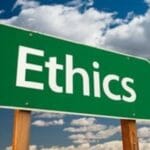- Webinar No: WBNR 1161
- PDH Units: 2
No data found for Custom Course Number
No data found for Custom Course Units
Intended Audience: All Engineers
Credits: 2 PDH Units
When: Wednesday 6/30. 2 - 4 pm EST
We promise you a very special webinar . This is not your boring ethics webinar. We are very proud to bring this webinar to you. In modern times, by using government-mandated standard codes and specifications in the design of engineered structures, machines, and systems, engineers have been able to create safe and yet economical products. However, in relatively rare but tragic cases, the structures and machines designed by engineers have failed, resulting in the death and injuries to the unsuspecting public. The question is why, even after following the governing design and construction codes and standards, such failures occur? In most of these failure cases, if not in all of them, the cause is the violations of the Code of Ethics, especially its first canon that states: engineers should “Hold Safety Paramount.” This webinar presents a summary of the Code of Ethics for Engineers focusing on safety-related provisions, followed by a discussion of how engineers and managers can work together to hold safety paramount in every step of the project. Then the webinar discusses the tools that are available to engineers, including whistle-blowing, to prevent safety-related disasters. The tragic explosion of the Shuttle Challenger during the launch, and the tragic disintegration of the Shuttle Columbia during the re-entry to the earth’s atmosphere will be used to show how not “holding safety paramount” by engineers and their managers resulted in the tragic failures and loss of lives of 13 astronauts and one teacher. References and Recommended Further Readings:
- Code of Ethics of National Society of Professional Engineers (NSPE) (PDF)
- NSPE Ethics Guide (PDF)
- ASCE Code of Ethics (PDF)
- Ethics, Technology, and Engineering, a textbook by Ibo van de Poel and Lambèr Royakkers, Wily-Blackwell, 2011. (Amazon page)
- Concepts and Cases-Engineering Ethics, a textbook by Charles E. Harris et al., published by Cengage2019. (Amazon page)
- Post, S.C., (2014) “Space Shuttle Case Studies: Challenger and Columbia”, 121st ASEE Annual Conference &Exposition, Indianapolis, IN.
- Columbia Accident Investigation Board (CAIB) Report. (2003) Government Printing Office.
- Columbia Accident Investigation Board
- Hoover, K. & Fowler, W.T. (2006) “Studies in Ethics, Safety, and Liability for Engineers: Space Shuttle Challenger”. The University of Texas at Austin and Texas Space Grant Consortium. Spacecraft Design Archive and Link
- Post Heppenheimer , T.A. (2002) Space Shuttle Decision, 1965-1972 (History of the Space Shuttle, Volume 1) Smithsonian Institution Scholarly Press.
- Report of the Presidential Commission on the Space Shuttle Challenger Accident (1986).
- Augustine Report - Report of the Advisory Committee On the Future of the U.S. Space Program. December 1990.
Date: Wednesday. June 30. 2021. Starts: 2 - 4 pm EST Credits: 2 PDH Units
Learning Objectives:
At the successful conclusion of this webinar, you will learn the following knowledge and skills:- Why “holding safety, health and well-being” of public is so important in preventing disasters.
- What does “holding safety paramount” means.
- How not holding “safety paramount” was the main cause of tragic explosion of the Shuttle Challenger during its lunch.
- What are the “legal” and “ethical” responsibilities of engineers to “hold safety paramount.”
- How engineers can convince managers to also “hold safety paramount.”
- How space shuttle Challenger disaster could have been prevented if the managers considered “safety” to be of paramount importance.
- How “group think” can blind engineers to “hold safety paramount.”
- What is “normalization of deviance” in engineering and scientific research and how it was the root cause of the Shuttle Columbia disaster.
- How “willful or intentional blindness” of engineers can create safety-related disasters
- How whistle-blowing can prevent engineering disasters.
- The important concept of “preventive ethics” proposed by Charles E. Harris Jr. in 1995.
Special Webinar Instructions
After payment, please visit this webinar page, click "Start Course" and fill out the Webinar Registration Form. You'll receive email notification and details on how to join the webinar. You will then be able to access the webinar slides, test your system and receive webinar reminders. After completing the webinar requirements, your certificate of completion will be saved and available for download in your profile. We value your feedback! Please rate this webinar after completion.Group Discounts Available
Course Reviews
4
- 5 stars1
- 4 stars2
- 3 stars1
- 2 stars0
- 1 stars0
Once completed, your order and certificate of completion will be available in your profile when you’re logged in to the site.











Clearly communicated the ethics issues and lessons learned.
Good overall review of issues in engineering ethics with two comprehensive, interesting case studies.
Good information, though not much I didn’t already know, having read the Challenger and COlumbia accident reports.
New spin on the ethics part of it, that was good.
Camera work was poor.
Don’t read the slides to me.
Turn off the phone before the course starts — I did.
Can’t find a link to take the quiz.
I learned about Challenger in college, but Columbia happened after. And I think both are very interesting topics for engineers, making ethics clear.